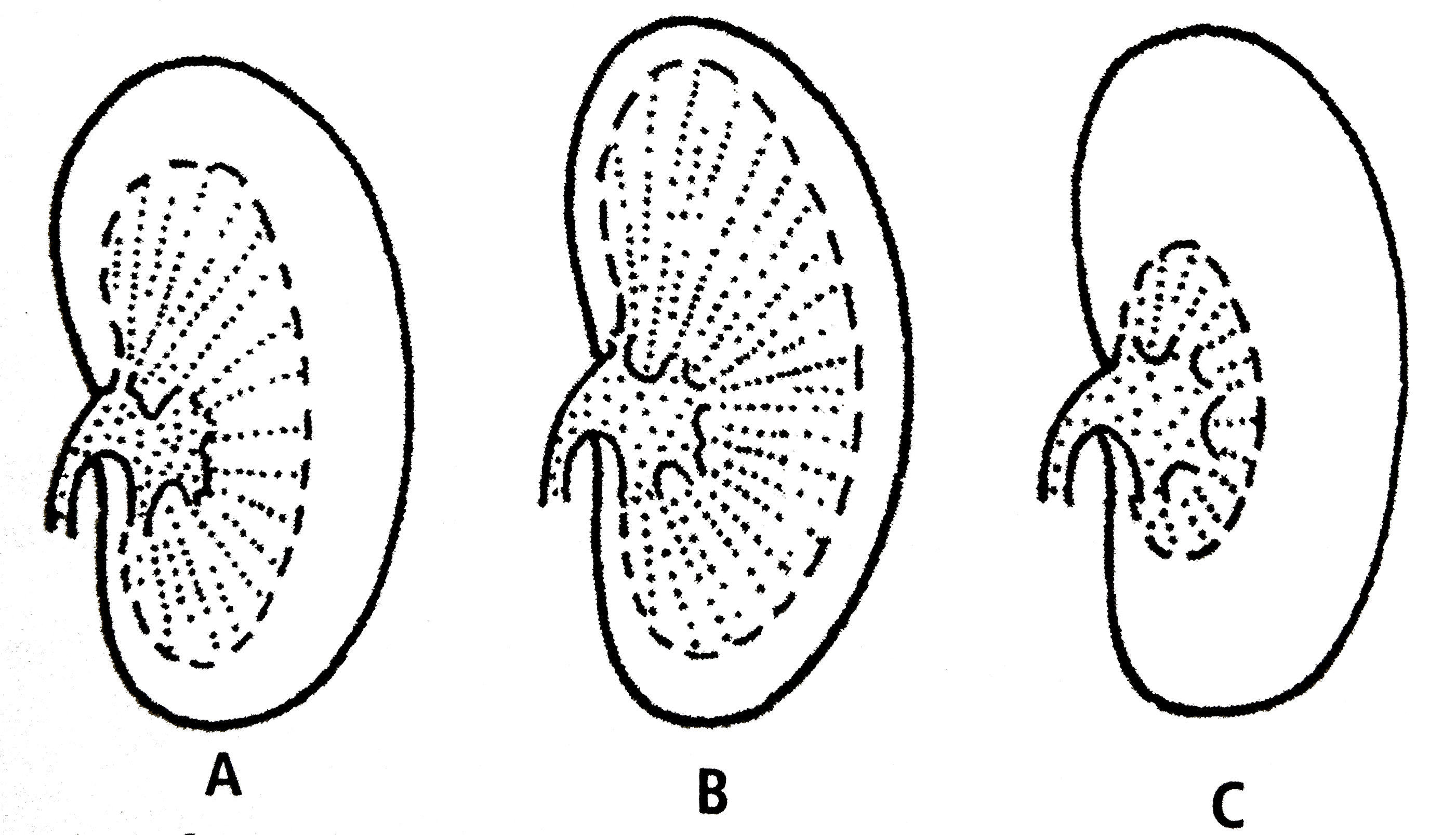Consider the following water conservation mechanisms:
(a) Nasal countercurrent mechanism
(b) Dependence on metabolic water
(c) Highly hypertonic urine
(d) Living more on protein rich diet A kangaroo rat living in desert can survive without drinking water because of
(a), (b) and (c)
(a), (b) and (d)
(b), (c) and (d)
(a), (c) and (d) only
The correct Answer is:A
Topper's Solved these Questions
- EXCERETORY PRODUCTS AND THEIR ELIMINATIONBOOK - CENGAGE BIOLOGYCHAPTER - EXCERETORY PRODUCTS AND THEIR ELIMINATIONEXERCISE - ASSERTION-REASONING QUESTIONS
10 Videos
- EXCERETORY PRODUCTS AND THEIR ELIMINATIONBOOK - CENGAGE BIOLOGYCHAPTER - EXCERETORY PRODUCTS AND THEIR ELIMINATIONEXERCISE - ARCHIVES
22 Videos
- DIGESTION AND ABSORPTION BOOK - CENGAGE BIOLOGYCHAPTER - DIGESTION AND ABSORPTION EXERCISE - ARCHIVES
25 Videos
- LOCOMOTION AND MOVEMENTBOOK - CENGAGE BIOLOGYCHAPTER - LOCOMOTION AND MOVEMENTEXERCISE - ARCHIVES
12 Videos
Similar Questions
Consider the following water conservation mechanism
A. Nasal countercurrent mechanism
B. dependence on metabolic water
C. Highly hypertonic urine
D. Living more on protein rich diet
The kangaroo rat living in desert can survive without drinking water because of
View SolutionSome desert beetles can survive on ''metabolic water'' without ever drinking liquid water which
View Solution
Knowledge Check
Consider the following water conservation mechanism
A. Nasal countercurrent mechanism
B. dependence on metabolic water
C. Highly hypertonic urine
D. Living more on protein rich diet
The kangaroo rat living in desert can survive without drinking water because ofAA, B & CBA, B & DCB, C & DDA, C & DWhich one of the following animals can live from birth to death without even drinking water?
AKangaroo ratBKangarooCCamelDDesert catSome desert beetles can survive on ''metabolic water'' without ever drinking liquid water which
AWas produced as water in the organisms they eatBIs absorbed from the air alongwith respiratory oxygenCIs a breakdown product of pyruvate inside the mitochondria alongwith CO2DIs a breakdown product from glycolsis in the cytoplasm.
Consider the following four statements (i)-(iv) about certain desert animals such as kangaroo rat.
i) They have dark colour and high rate of reproduction and excrete solid urine ii) They do not drink water, breathe at a slow rate to conserve water and have their body covered with thick hairs iii) They feed on dry seeds and do not required drinking water iv)They excrete very concentrated urine and do not use water to regulate body temperature. Out of these four, which two are correct :
View SolutionWhich of the following statements is correct ?
(A) Mycoplasma has no cell wall
(B) Viruses can multiply only when they are present inside the living cell.
(C) True sexuality s not found in bacteria
(D) Mycoplasma can not survive without O2
View Solution
The diagrams shows vertical sections of kidneys of coypu, brown rat and kangaroo rat, showing the relative size and Coypu is found in freshwater and is never of short of water to drink. Brown rats are able to go some days without drinking. Kangaroo rats are able to live in deserts without drinking at all. Which kidney belongs to which animal.?
View Solution
The diagrams shows vertical sections of kidneys of coypu, brown rat and kangaroo rat, showing the relative size and are never short of water to drink. Brown rats are able to go some days without drinking. Kangaroo rats are able to live in deserts without drinking at all. Which kidney belongs to which animal.?
View SolutionWhich of the following statements is correct ?
(A) Mycoplasma has no cell wall
(B) Viruses can multiply only when they are present inside the living cell.
(C) True sexuality s not found in bacteria
(D) Mycoplasma can not survive without O2
View Solution
